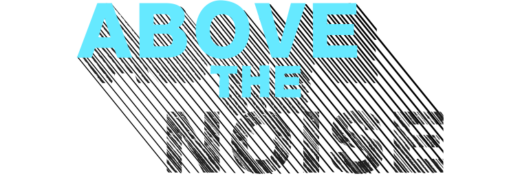If you want your students to tackle real-world issues and take a deeper look at evidence, data and research, then KQED’s video series Above the Noise belongs in your classroom. Keep reading to find ideas about using this new series to help your students cut through the hype and learn more about the world around them.
What is Above the Noise?
Above the Noise is a YouTube series for middle- and high-school students that dives deep into the big questions behind issues affecting students’ daily lives. Episodes take on complex subject matter with facts and research to help young viewers draw informed conclusions, while inspiring media literacy and civic engagement.
Above the Noise focuses on data and science literacy, but the series takes on issues that are just as relevant in English and social studies classrooms.
The Anatomy of an Above the Noise Episode
Each episode has a similar structure in order to help students unpack the topic.
- The hype: Every episode starts with what we call “the hype.” We choose issues that are already being talked about. Then, the hosts go beyond the hype and find out what’s really going on.
- The research: We do research, analyze information and evaluate the data behind the hype. The hosts model how to look at information by talking about things like sample size and research protocols, citing research papers and discussing what the experts are saying.
- The call to action: Episodes end with a question students can answer. This can be a jumping off point or serve to wrap up the topic. We’d love for your students to respond to this question in the comments on our YouTube channel, either individually or as a class. Many episodes are also featured resources for KQED’s The Lowdown.
Using Above the Noise with Students
Step 1: Choose an Above the Noise episode
Check out the episode list on our YouTube channel and accompanying resources on the KQED Education website. From gerrymandering to genetically engineered mosquitoes, there’s something for everyone!
Step 2: View and Discuss
As a class or in small groups, have students watch the Above the Noise episode. True to YouTube style, the narration can move quickly, so plan to watch more than once. You can also stop and start the video as needed and use the closed-caption function. Use the student viewing notes handout to help your students keep their thoughts organized.
Before watching the video
Gauge what students already know about the topic. If you want to provide a brief overview, you can find more resources in the episode’s blog post on KQED Education. Start by asking students the following questions:
- What do you already know about this topic?
- How well do you think you understand this topic? Is what you know based on your own reading, word of mouth or from scanning headlines on social media?
- What questions do you have about this topic? What do you want to know more about?
While watching
Stop to check for understanding and point out the data and media literacy aspects of the episode. Here are questions that apply to almost all videos:
- What issue does this episode discuss?
- What is the “hype” around this topic or issue?
- What does the data or other evidence tell us about this issue?
- How does the host analyze the data? What kind of research or information is presented?
- Are the sources used in the episode credible? How do you know?
- Do you think graphics are used effectively in this episode? How do they add or detract from your understanding of the topic?
- What other production choices (color, sound effects, etc.) did you notice while watching the episode? How did they add or detract from the topic?
After watching
Help students share their thoughts and internalize the media literacy strategies from the episode using the following questions:
- Have your views on the topic changed? If so, how?
- Did the evidence provided in the episode help to change or refine your views? Explain.
- How would you respond to the “call to action” question at the end of the episode? (Give your students time to respond in the comments section of the YouTube page or on the episode’s page on KQED Education.)
- What did you learn about analyzing evidence or data from this episode that you can use when reading about other controversial topics or doing your own research?
- What is another aspect of this issue that you think should be studied further? What would your research question be?
- How might someone else look at the evidence presented in the video differently than you do?
- What questions do you still have about the topic? What is unclear?
If you and your students want to explore the issue further, you can review the research behind each episode and find links to further reading on the Above the Noise collection page.
